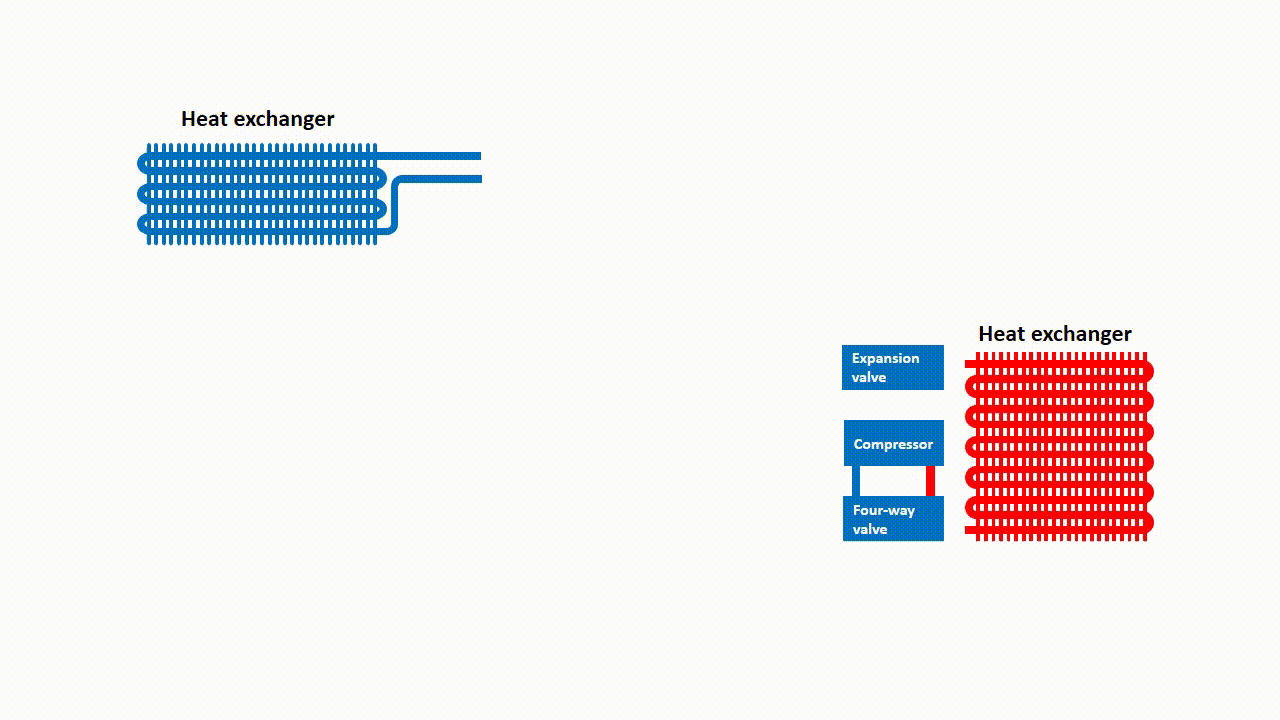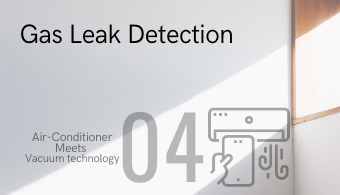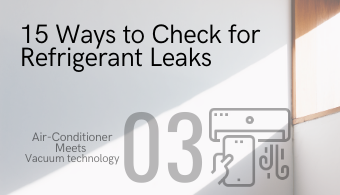Lifestyle
#02 The Importance of Refrigerant Leak Detection

ULVAC Group is a unique corporate group that provides a wide range of comprehensive vacuum technologies, including vacuum systems, vacuum equipment, materials, analytical equipment, and customer solutions, for various industries.
However, you might wonder, "What is the wide range of vacuum technologies?" or "Where in various industries is the vacuum technology used? "
You might be surprised to know that vacuum technology hides in various places around us.
Did you know that vacuum technology is also used in home air-conditioner (Ductless Mini-Split System Air Conditioners), essential to our daily lives throughout the year?
When? Where? 2 Things You May Not Know Leak Detection
Why Refrigerant Important?
The previous article explained how air conditioners blowback cold air into your house.
The refrigerant circulating between the indoor and outdoor units plays an essential role in air conditioners' performance.
In other words, the refrigerant works well, and the air conditioner's performance is also good.
So, what conditions make the refrigerant performance better?
It is no leaks in the path where the refrigerant travels at both factory production and installation into homes.
When is the Refrigerant Leak Detected?
By the way, have you ever wondered if a refrigerant is leaking from your air conditioner?
Leaking refrigerant reduces air conditioner performance. So, manufacturers detect leaks at the production phases so that the air conditioners work perfectly.
First, manufacturers inspect the leakage in the path through where the refrigerant travels. They also check for leakage before they inject the refrigerant after assembling the components.
After these are delivered, Installers also detect any refrigerant leak.
3 Phases to Have Leak Detection Test
There are 3 phases a leak detection test is conducted before installing into your home.

First, manufacturers conduct the leak detection test after assembling parts of the path where the refrigerant travels.
1.Heat Exchanger in the indoor unit
2.Compressor in the outdoor unit (Includes four-way valves)
3.Heat exchanger in the outdoor unit
4.Expansion valve in the outdoor unit
Next, manufacturers assemble the compressor, the heat exchanger, and the outdoor unit's expansion valve and incorporate a circuit for control to complete the outdoor unit. In the same way, manufacturers assemble a control board and an exterior into the indoor unit's heat exchanger.
The refrigerant goes through only the heat exchanger in the indoor unit. Due to leak detection tests at the production phase already, there is no need to check leaks at the heat exchanger.
When it comes to the outdoor unit, there are some points to check leaks: joints between the heat exchanger, the compressor, and the expansion valve where the refrigerant travels around.
After confirming no leakage in the indoor and outdoor units (or, more precisely, the amount of leakage is below the standard value), manufacturers inject the refrigerant into the outdoor unit. Now, the air conditioner is complete, all sets.
The air conditioners delivered to each home.
The indoor and outdoor units are connected with refrigerant pipes made of copper and vacuumed, and installers conduct the leak detection test at each joint.
After confirming no leak at the connections, the installer releases the refrigerant injected in the outdoor unit to the indoor unit. The installer conducts the leak test again and ensures no leak. Then, the installation is over.
Lifestyle
-

Protect nutrients by preventing oxidation with a vacuum chilled
-

#05 Helium Leak Detector
-

#04 Gas Leak Detection Methods
-

#03 Classification of Leak Detection Methods
-

Built-in small diaphragm pump for tasty and long-hour storage
-

#02 The Importance of Refrigerant Leak Detection
-

#01 How The Air Conditioner Works
Solution
- Big Science
- Lifestyle
- Technology
- Medical Field